Montana's Grain Elevators
A Photo Essay
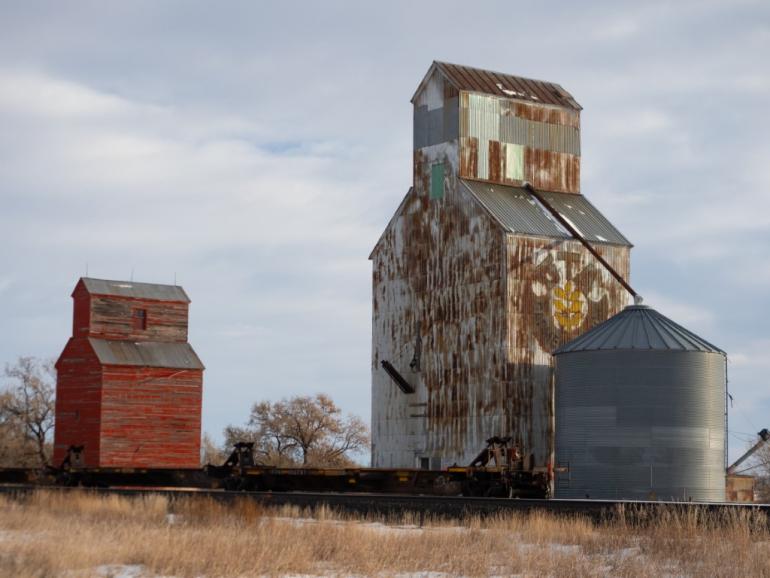
“Cleiv?”
“Nope.”
“Collins or Lodgegrass?”
“Nope. Those are gone, too. But there’s one in Wyola that still has the logo on the north side of the elevator,” Bruce Selyem said.
Bruce is an authority on grain elevators and president of the Country Grain Elevator Historical Society. Making rounds to visit the state’s old elevators with his wife, Barbara Krupp-Selyem, he says that fewer are standing every year. As I spoke to him about those still standing, he said the ones in Saco and Hinsdale have been down for a while, but Rapelje still had the four the that graced the cover of their book, Old Time Grain Elevators II.
Across the Great Plains in both the U.S. and Canada, up to 30,000 prairie skyscrapers dotted the landscape during their heyday in the 1920s and 1930s. Today only about a third of the old wooden grain elevators are left.
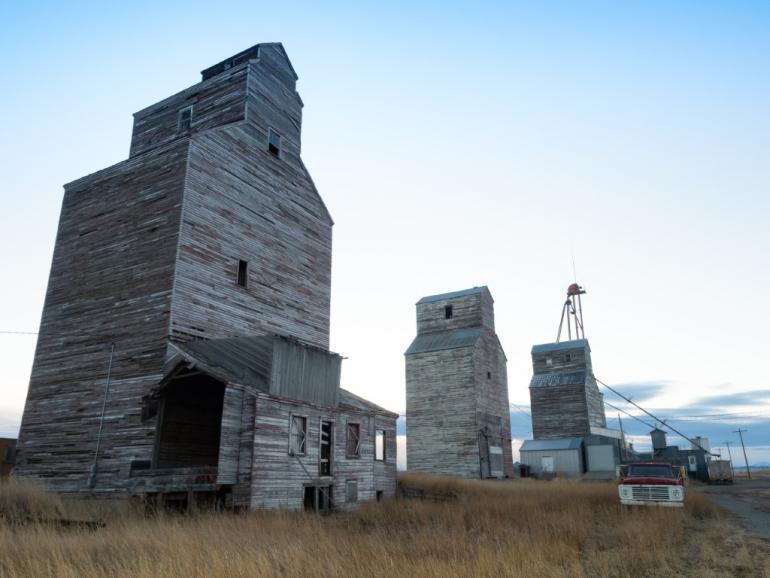
Anything over ten stories tall qualified as a skyscraper in 1842 when Joseph Dart and Robert Dunbar first invented them. Once grain crops shifted from purely local use to distribution to a broader market, a facility to sort and store grain became a necessity.
Elevators spread from east to west, springing up next to railroad tracks that found their way into every coulee in Montana. As the main rail lines marched into the state, the Northern Pacific following the Yellowstone River and the Great Northern on the Hi-Line, they dropped off supplies to build the massive wooden structures.
Just the lower portions, called cribs, required 300,000 board-feet of lumber and were built like a log cabin with overlapping corners. Atop the crib, the headhouse was frame construction. The belt and bucket grain conveyor system extended from the ground floor to the top of the headhouse. A man-lift utilizing a counterbalance system with rope, pulley, and weights ferried the elevator’s operator up and down the 10 stories easily, provided the worker was honest about his weight.
They were called elevators because as the trucks unloaded grain onto the work floor or boot, buckets on a conveyor belt elevated the grain to the headhouse and separated it to bins based on protein content. The grain was either stored until it yielded higher grain prices or offloaded to a waiting railroad grain car for export.
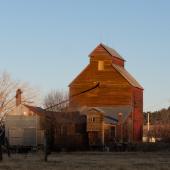
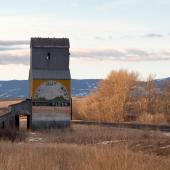
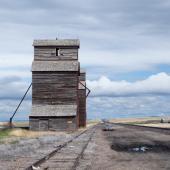
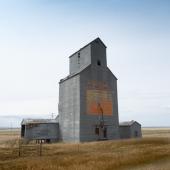
The trains that had delivered elevator construction materials westbound also carried grain from elevators eastbound. With tracks laid on land donated by the government, the railroads had a tidy business coming and going.
Many elevators were painted red. The paint got its color from iron, a plentiful element, which meant red was the cheapest paint to make. Elevators in Zurich and Grass Range, although chipped and weathered, still retain their red color. Elevators also had the company’s logo painted on them, like “Best Out West” in Wyola or “Sapphire Flour, Ceretana Feeds” on an elevator north of Judith Gap on Highway 191.
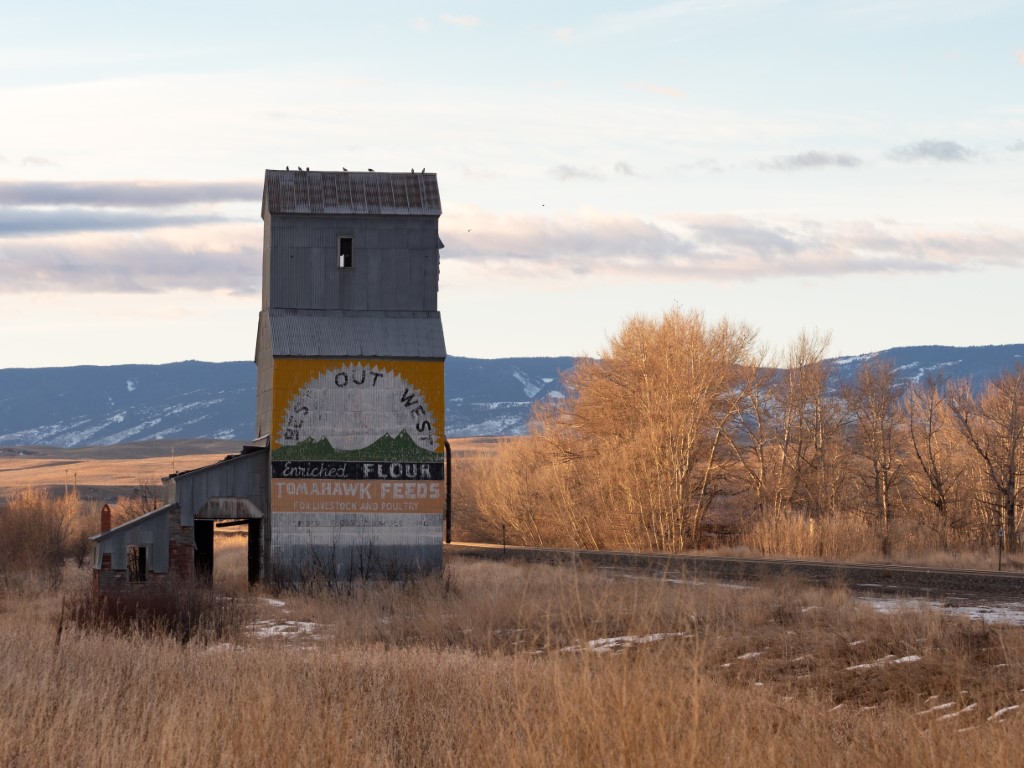
Although some old grain elevators appear to be metal, they are still wooden underneath. Trains throwing sparks ignited grass fires that in turn burned the wood-only elevators. As losses mounted, insurance companies stepped in, requiring metal siding. This did nothing to prevent the fires from within the elevator since grain dust is extremely combustible, but it did cut down on insurance claims.
Wooden grain elevators were eventually replaced by elevators constructed with steel-reinforced concrete – a cheaper, stronger, more durable material. The old wooden elevators, holding 10,000 to 30,000 bushels became too small and needed too much upkeep.
Another factor contributing to their demise came with the advent of economical trucking. Grain was hauled out by truck rather than rail. Eventually, the elevator’s operator brewed the last pot of coffee, boarded the windows, and closed the doors of the farming community’s gathering place. Some elevators eventually fell where they once stood tall.
Others were dismantled by reclamation companies eager to reuse or sell the high-quality lumber. The large quantity of wood sanded smooth by grain kernels made salvage for use in flooring and doors worthwhile. And the massive, #1 grade 12 by 12-inch square and the larger 12 by 14-inch beams became a hot commodity, since beams of that quality and size are hard to come by.
For the elevators that remain, it is easy to take them for granted, to never really see them when you live in their shadows – that is until disrepair and a gust of wind threaten their very existence.
BNSF planned to demolish Hobson’s languishing elevators. The Montana History Foundation, Country Grain Elevator Historical Society, and those interested in saving the 110-year-old structures teamed up to save the two elevators. The “Pride of the Judith” preservation project’s leader, Gerri Campbell, says a grant and generous donations will pay for the insurance and lease. Ongoing donations are needed for repairs.
For less fortunate elevators, Bruce and Barbara keep their memories alive through the photographs, stories, and histories they have compiled over the last few decades. Over that time, many have disappeared from the horizon. Through their efforts, these treasured prairie skyscrapers will forever be a part of Montana’s landscape. Gone but not forgotten.








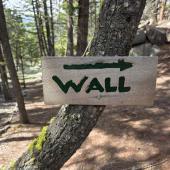
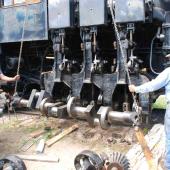


- Reply
Permalink